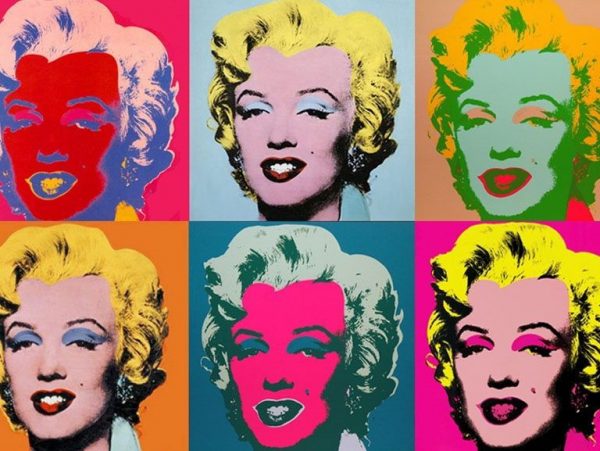
Photo by tes.com
Let’s get something out of the way before we begin, the best we can do to define an art movement is to read the wide range of interpretations and to interpret for ourselves. With that being said, defining modern art certainly sounds like an uphill battle that anyone is doomed to lose. The good thing about recorded history is that it’s right there for anyone to learn from. Modern art is defined by the current issues of a society, and so, by that token, all forms of art at some point were a reflection of society, thus were considered “contemporary” at some point.
We hope to make understandable the concept of modern art with an easy guide about art a century ago all the way to the current trends that dominate the market. We ask you to take a moment to learn about the various movements that make up the current landscape of art in our age.
Pop Art
The first offerings of pop art appeared in 1950. The most prominent pioneers of the movement are Andy Warhol and Roy Lichtenstein. The work of both artists is centered on taking any established vintage design and give them a whole new twist to make them look unique. The pair was noticeable for using all forms of expression, from photography to paintings. The trend had a good run, and many artists still evoke the style. The movement would also inspire up and comers from other eras to create new interpretations of it such as Jeff Koons and the work he did during the 80’s labeled Neo-Pop.
Photorealism
This art trend was prevalent during the 70’s, and it’s still held in high regard by many art lovers around the world. As the name implies, photorealism is a technique to reproduce the portrait of someone or something using art tools to achieve levels of realism that can’t be offered by a single picture. The biggest name of this art trend when it started was Chuck Close and Gerhard Richter. These days the most powerful name of this movement Is, surprisingly, a comic artist named Alex Ross.
Conceptualism
This whole movement is considered a spin-off of pop-art and is regarded as a contrarian movement by many in the art industry since it places the message of the artist above the value of the piece. The movement originated in late 60’s with names such as Damien Hirst, Ai Wei Wie and Jenny Holzer doing unconventional pieces of work that expressed their own beliefs without attachment to meager or superficialities such as money. The modern equivalent of these passionate predecessors would be ultra-secretive artist Banksy, who recently made the headlines again by shredding a print of his own work valued at $1.5 million during an auction.
Performance
The roots for performance art reside in conceptualism. The artist intent is to offer an open message that is to be interpreted by the receiver as they deem fit or acceptable. Many times the artist will convey the message and explain it for those who “don’t get it”, but most of the time, they keep silent about their intentions since the whole idea behind the performance is to bring out some sort of emotion to the ones who can appreciate it. Some of the most well-known art performers are Allan Kaprow, Yves Klein, and Joseph Beuys, while one of the most famous performance artists, thanks to the internet, is Marina Abramovic.
A Look in the Future?
Art keeps evolving. There are so many expressions now that are considered works of art that it’s difficult to keep track of the number of disciplines that are considered art forms. While paintings, sculptures, and photography are still mainstays of the industry, unorthodox expressions such as installation, embroidery, and tattoos are now considered forms of art as well.
A look to the future will involve the interception of art with the ever-evolving internet. As Kooness pops up allowing people of different lives to interpret and sell art and creative websites become indistinguishable from the modern masterpieces of today, the art landscape will morph with our collective thoughts and beliefs.